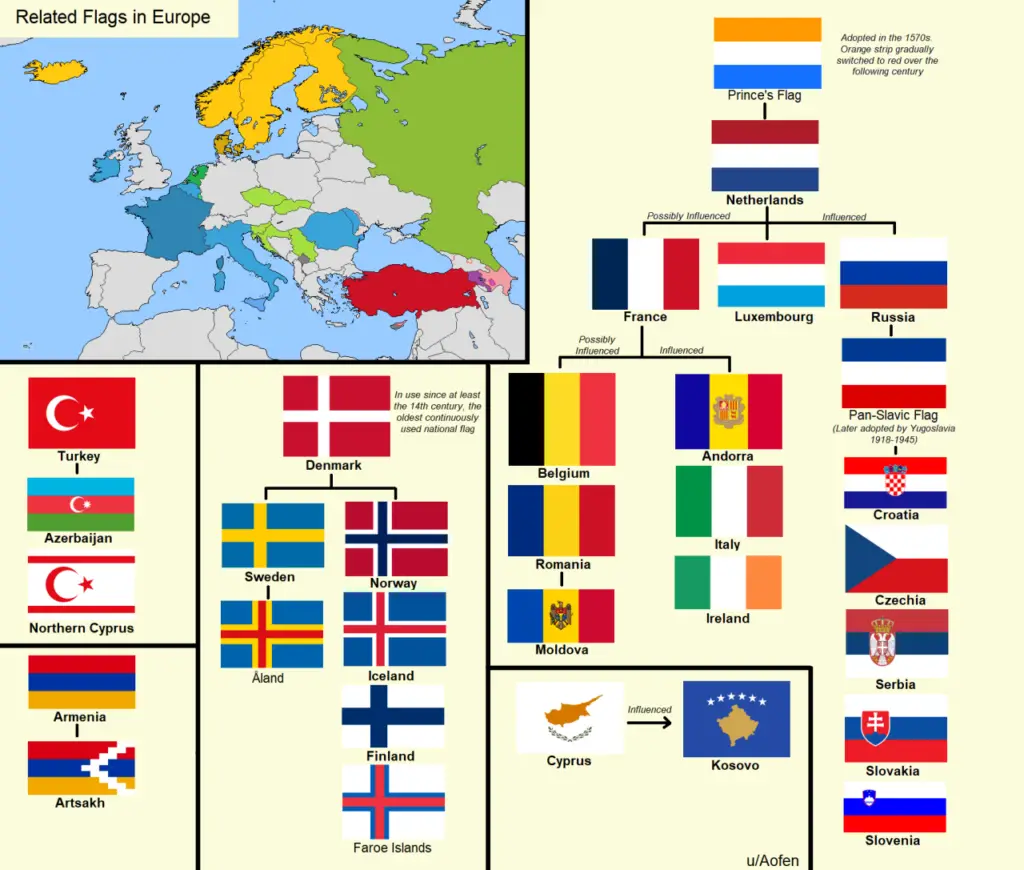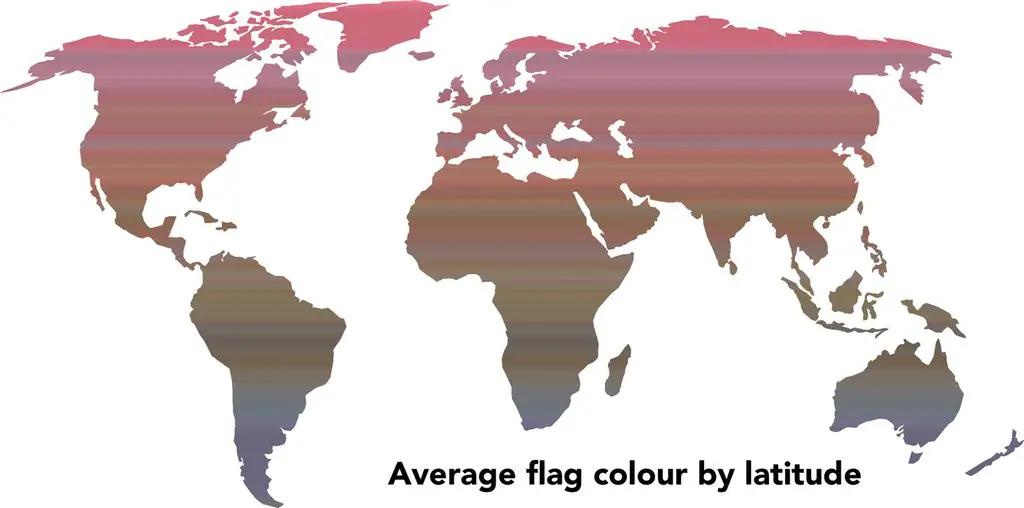Related Flags in Europe
In Europe, there exist several instances of related flags, where certain countries share similar patterns, colors, or symbols in their national flags. These similarities often reflect historical, cultural, or geopolitical connections between nations.
One notable example is the pan-Slavic colors of white, blue, and red, which are prominently featured in the flags of several Slavic nations such as Russia, Serbia, Croatia, and Slovenia, showcasing a shared cultural heritage.
The tricolor pattern, featuring three horizontal stripes of different colors, is recurring theme also seen in the flags of various European nations, including France, Italy, Belgium, Germany, and Ireland, each with its unique historical significance.
French and the Pan-Slavic flags originated from the Dutch flag, which was derived from the Prince’s flag. The Prince’s Flag was used by the Dutch during the Eighty Years’ War (1568–1648) when the country fought for independence from Spanish rule.
The orange stripe represents the House of Orange-Nassau, a prominent Dutch royal house. Over time, the orange dye used in the flag faded to red, leading to the adoption of the red-white-blue tricolor, which is the current national flag of the Netherlands.
The map and graph below, created by Reddit user Aofen, show the origin of the flags of various countries in Europe.

Nordic countries like Sweden, Norway, Denmark, Finland, and Iceland share a common cross design in their flags, emphasizing their historical and cultural ties as members of the Nordic region.
To learn more about flags see:








